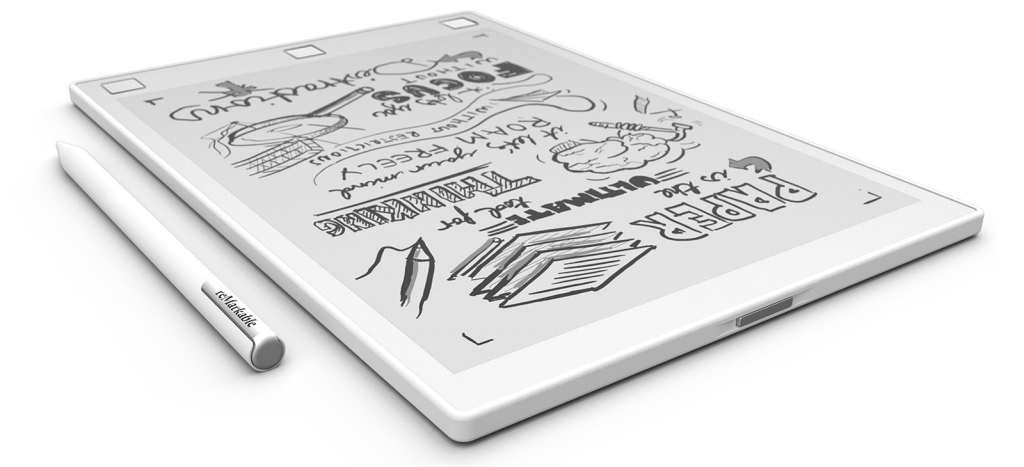You know the problem with digital pen and paper, and how they don’t feel like pen or paper? A new tablet aims to fix that.
The world of tablets is in a curious place, and while many are unsure quite what’s happening as the sales begin to drop, others are coming up with new possibilities.
Take the case of a Norwegian startup dabbling with the idea of a tablet that allows you to draw on a screen that feels like paper with a look that responds like paper, thanks to a new screen technology it calls “CANVAS” that it has worked on with the folks at E Ink.
You’ll know E Ink if you’ve used an electronic reader like the Kindle or Kobo before, with its technology able to recreate the look of paper to the eyes without the fact that it feels like a screen, even though it quite obviously is.
Digital paper has helped make eBooks what they are today, and while tablets and phones are making a dent on that market with their own colour versions of books, the black and white paper effect of electronic ink still reigns supreme over in the world of electronic reading thanks to the Kindles and Kobos of the world.
But while the Kindle is mostly a passive experience, Norway’s reMarkable wants to change that with a new type of eReader.

That will make it a digital electronic writer, so to speak, allowing you to take notes, drawings, scribbles, and anything you use pieces of paper for, all connected into one flat tablet.
There are a few catches, but the important one worth noting (see what we did there?) is that while reMarkable is in testing now for a release mid-2017, it will not be cheap when it does come out.
Currently, the company is tracking for a $716 USD price tag, with a pre-order price of roughly half of that sitting at $379 USD.
No matter how you slice it, $379 for a tablet is fine especially since it’s roughly $500 AUD including shipping. That’s ok, we could live with that, even if spending $500 on a startup’s first product does make us a tad squirmish.
However $716 USD as a retail price makes it roughly $960 locally as a minimum, a price that’s up there with the iPad Pro in a product that is yet untested against it. Granted, pre-orders would be saving money, but until we know what this thing is like, both price tags are a little hard to swallow, and will kind of have to battle against existing digital pen and paper solutions that already work.
For instance, there’s the excellent iPad Pro with its Pencil from Apple, and while they don’t feel like pen and paper truly, the tablet can do so much more than display text and your scribbles.
Microsoft has its Surface computers on the PC side of the world, which again don’t feel like pen and paper, but you can use software like Photoshop with a stylus, much like you can with Wacom’s MobileStudio computers.
Lenovo’s YogaBook also strikes us as a serious competitor to to reMarkable simply because it does manage to feel like paper, partially because you can use its special digital pen stylus to write on paper while it gets mapped to what happens on screen, and it can be found for far less than reMarkable’s tablet.
That’s the problem with reMarkable: its price is anything but, or rather its price is so high, that it’s remarkable the founders didn’t question if people would automatically opt for the competition just upon seeing the price to begin with.
Getting behind startups is hard enough at the best of times for most people, but when your product is very expensive, it’s harder for people to embrace it.
ReMarkable gets a little concerning when you learn what it doesn’t do, with a rather “made for purpose” attitude, with no web access, no email support, no OCR (your writing turning to text), and no support for colour which is one way paper trumps the tablet.
It will read eBooks in ePub format (Kindle isn’t open to devices not made by Amazon), but that’s about as far as its extra functionality goes, and it may not be made available to Australians in its first run.
That lack of local availability may make the decision of helping the Norwegian startup get this thing off the ground a little easier since Aussies can’t plonk their money down yet, with reMarkable saying (on its webpage) that it is only available to the US, Canada, and “select countries in Europe”, which doesn’t appear to be our island on the other side of the world.
However none of this means the reMarkable won’t come to Australia, though it does raise the question of whether you’d pay $1000 for a tablet that only took notes and read books.
We love technology, and we’re not sure we would, as we’re just come to expect gadgets do a little more these days.












